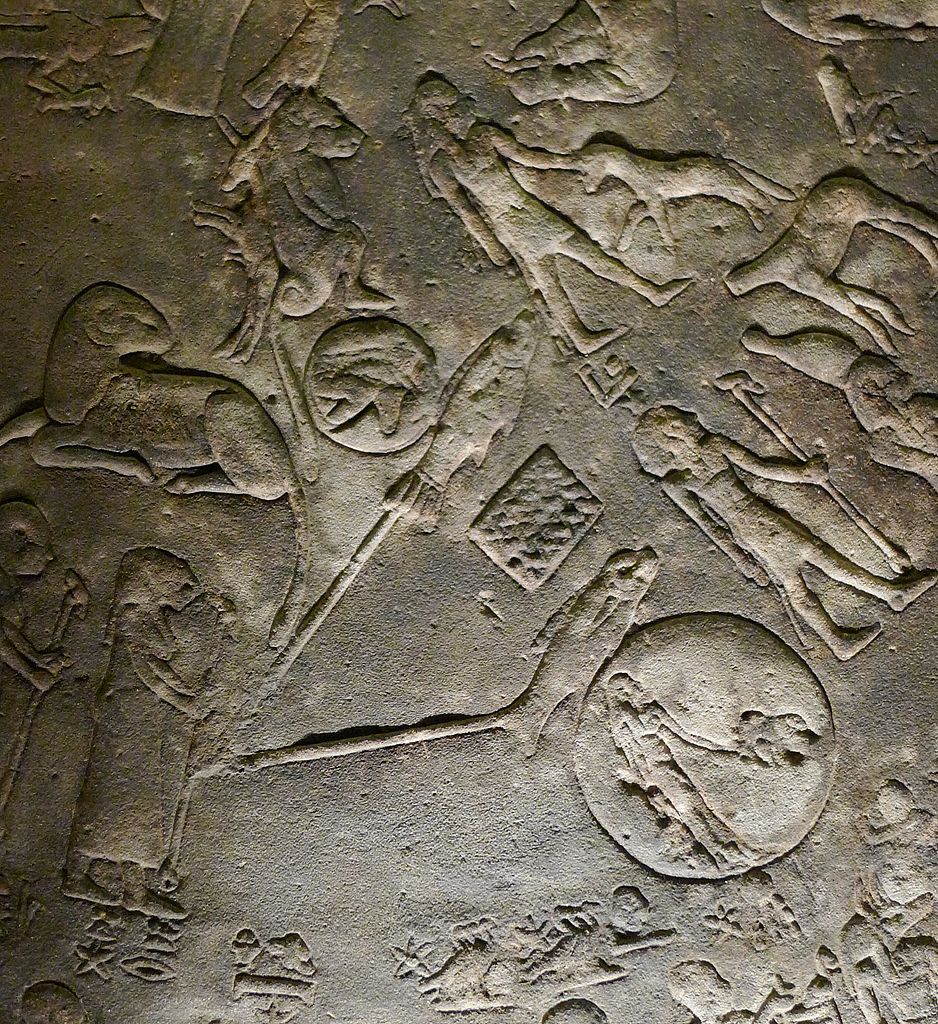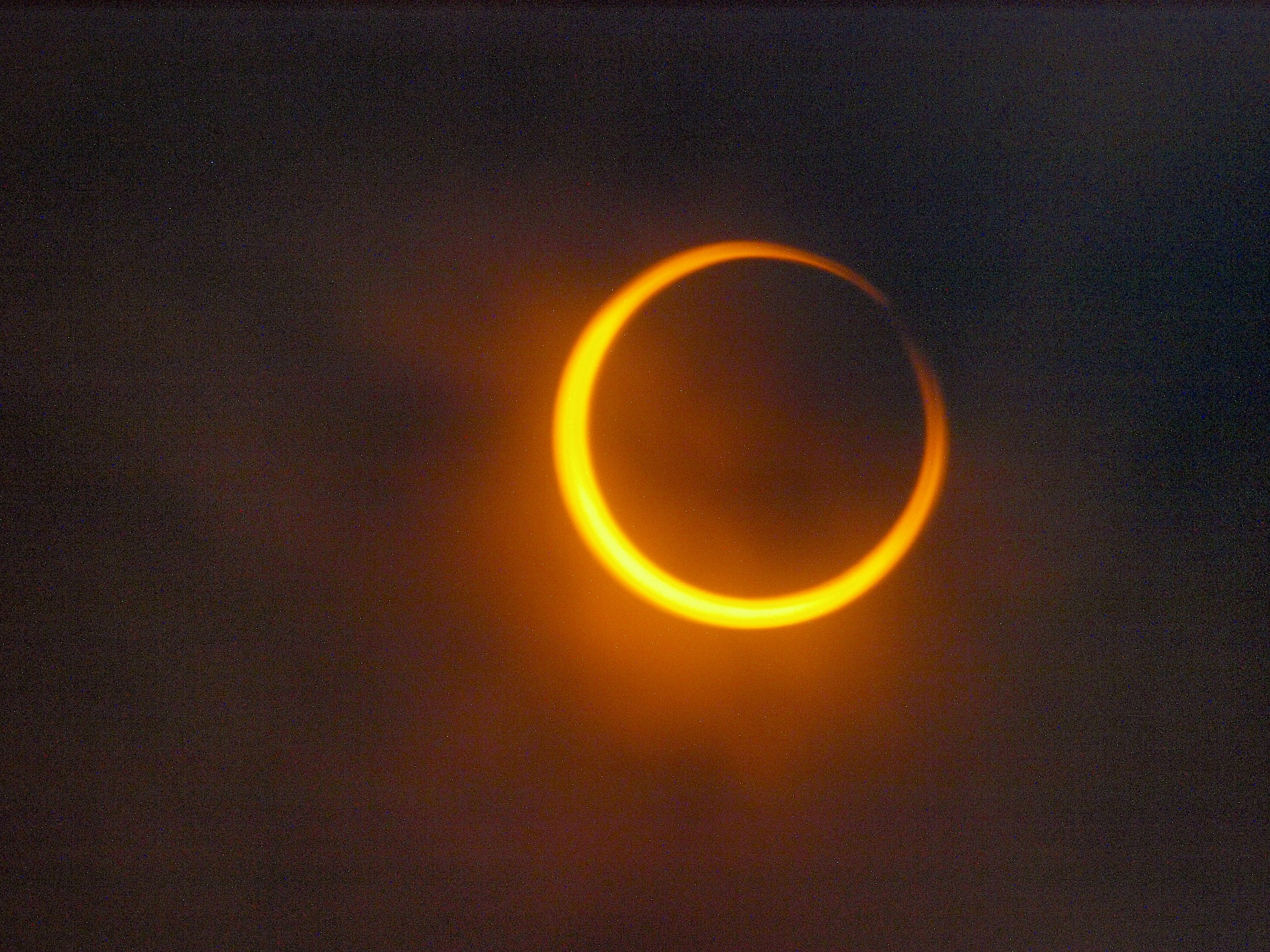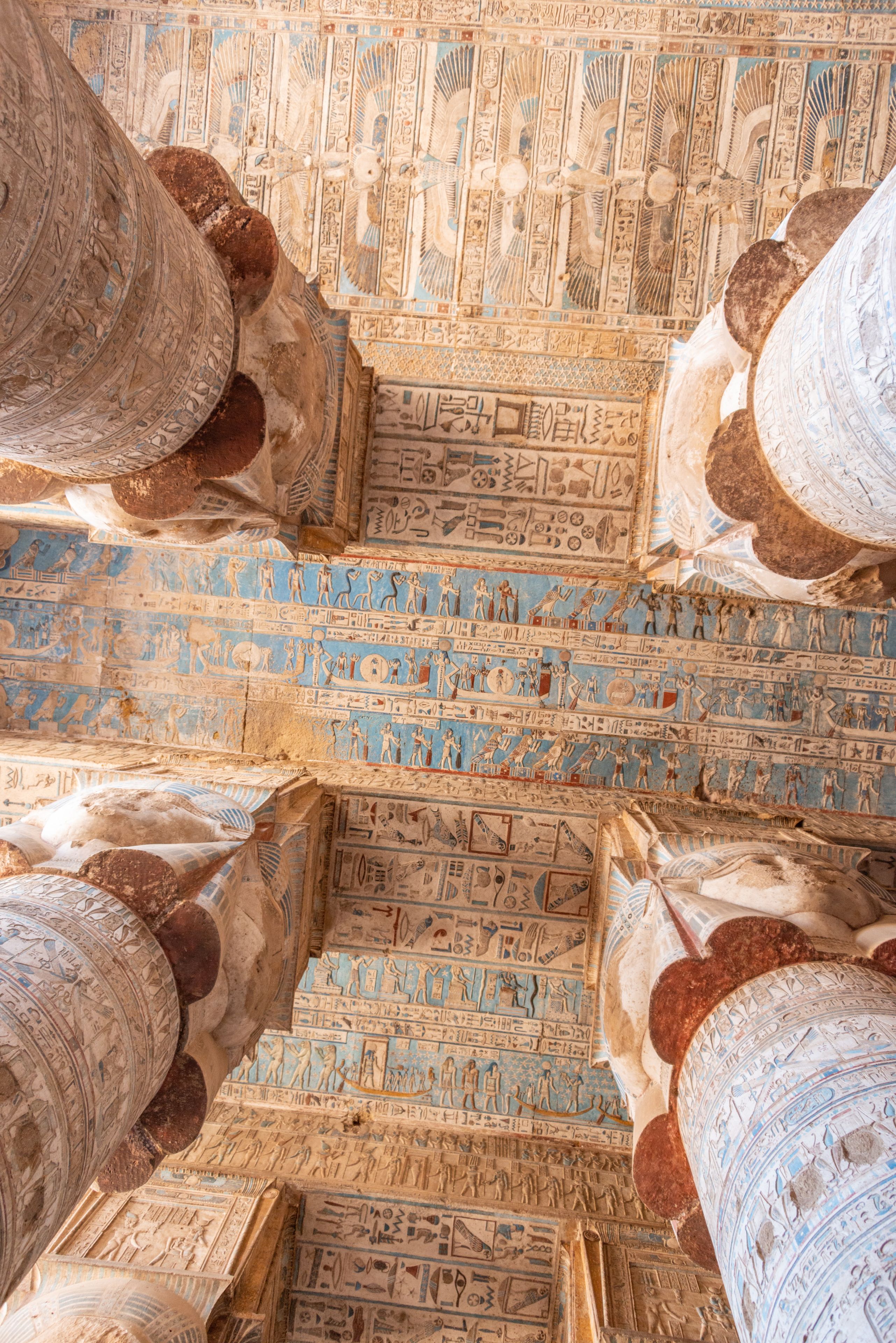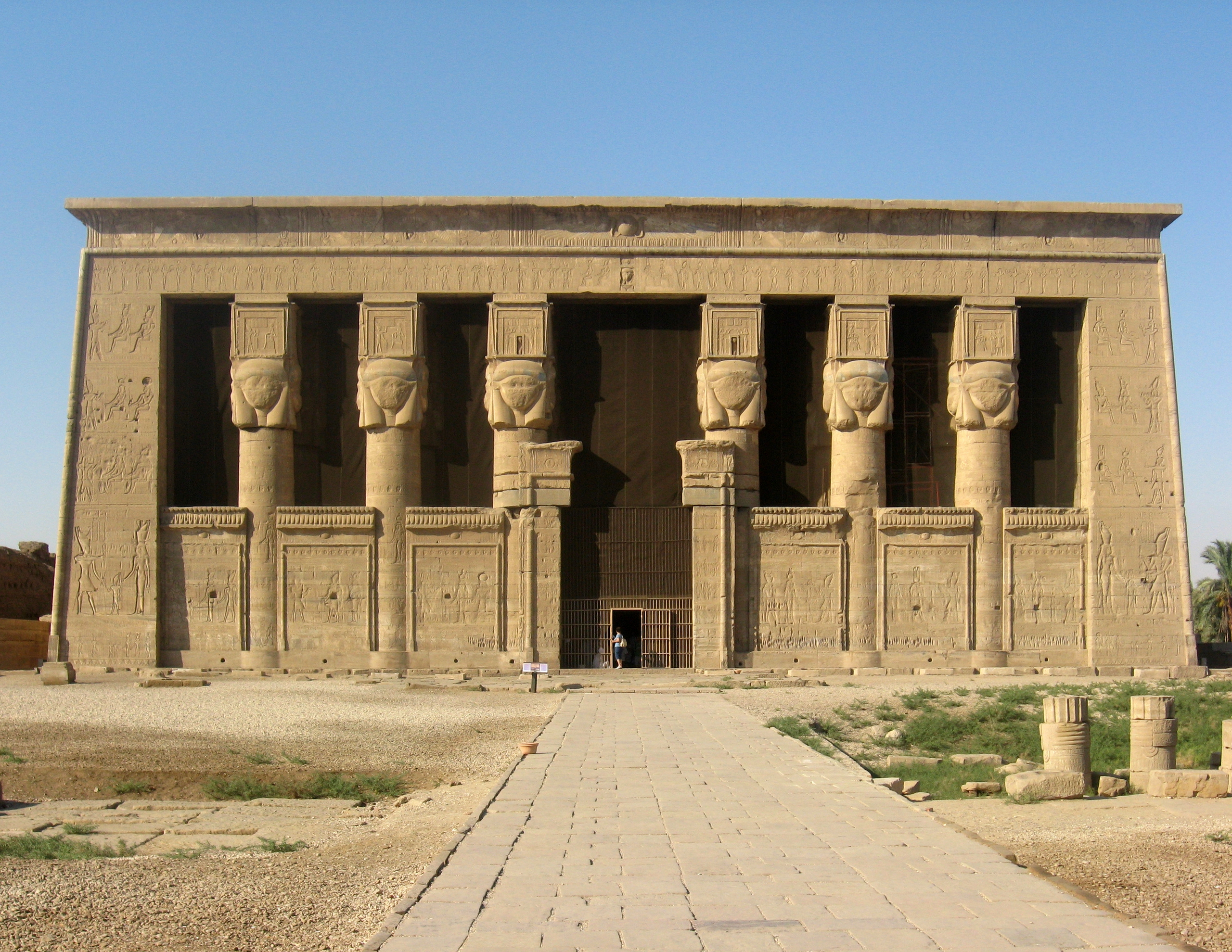History & Culture
The Dendera Zodiacs: A Rorschach Test
Many have tried to interpret the astronomical significance in these two Egyptian engravings of the cosmos.
By Elisa Shoenberger
Gary Todd/Wikimedia Commons
Considered one of a few known representations of the cosmos in Ancient Egypt, according to Sharon Waxman of Loot, the Zodiac of Dendera hangs from the ceiling in a lesser known gallery in the Louvre’s Egyptian galleries. This black sandstone slab — measuring some 8 feet on each side and 3 feet deep — depicts a circular sky with planets, known constellations, and a panoply of ancient Egyptian mythological elements. Since the European’s discovery of the zodiac, scholars have tried to decipher its content and meaning, often creating theories not supported by historical or archaeological record. Bradley E. Schaefer, Professor Emeritus of Physics and Astronomy at Louisiana State University, calls the Dendera zodiac a “Rorschach test,” because people bring their preconceived notions to the ceiling and see what they want to see.
The Zodiac of Dendera had been ripped out with explosives and saws of the Temple of Hathor at Dendera in 1821 and brought to France with great ceremony. The meaning of the ceiling was debated in Parisian salons and it even was referenced in a French play. A copy now sits in the Temple, while the original is at the Louvre.
While it may not be a well-known stop for tourists in the Louvre, the circular zodiac is considered one of five archaeological objects that archaeologist and former Egyptian Minister of Antiquities Zahi Hawass wants repatriated to Egypt, along with the British Museum’s Rosetta Stone and the Nefertiti bust at the Egyptian Museum of Berlin.
The dating debate
While the circular ceiling definitely made a splash in Paris and amongst Egyptologist circles in the 19th and 20th centuries, the astronomical and astrological meaning of the ceiling remains uncertain. According to Diane Greco Josefowicz and Jed Buchwald’s The Zodiac of Paris: How an Improbable Controversy over an Ancient Egyptian Artifact Provoked a Modern Debate between Religion and Science, the original savants — the scientists, engineers and other scholars that Napoleon brought to Egypt — “claimed that the placement of figures of these objects was intended to present the state of the sky at the time they were designed, if not carved.”
According to the Louvre, the ceiling shows five planets — Venus, Jupiter, Mars, Mercury, and Saturn — as well as two eclipses, one solar and one lunar. The images that depict the solar eclipse show the goddess Isis holding a baboon by its leg or tail. The Moon god was often portrayed as a baboon, and so these images signify Isis’ attempt to stop the Moon from hiding the Sun. The lunar eclipse is depicted as an udjat-eye (also known as wedjat-eye) within a circle, a frequent symbol of a Full Moon. A lunar eclipse occurs only when the Moon is full.

Some experts believe the circular Zodiac of Dendera portrays a lunar eclipse (the circle in the upper-left quadrant) and a solar eclipse (the circle in the lower-right).
[Mbzt/Wikimedia Commons]
Frenchman Vivant Denon published this drawing of the circular Zodiac of Dendera in his Voyage dans la Basse et la Haute Égypte (Paris, 1802).
[From The New York Public Library]
Some scholars dated the ceiling to 15 June and 15 August 50 BCE, given the unique arrangement of the stars and planets, as well as around when the Temple was built (construction is believed to have begun in 54 BCE).
However, modern scholars question the astronomical accuracy of the dating and the planets. E.C. Krupp, Director of the Griffith Observatory, calls the dating of the sky “highly speculative. It is a notion intended to fit what’s in the image and not a proof of meaning.” He says that there are “too many variables in the problem with too many unknowns in order to be able to be confident in any interpretation.”
Juan Antonio Belmonte, Research Professor of Astronomy at the Instituto de Astrofísica de Canarias, in an email says that the ceiling could be dated to 50 BCE but also notes, “More precision than that is absolutely unrealistic, because the position of the planets is symbolic and not astronomical, and I cannot envisage any other dating method for such a precision.”
While astronomers concede that two eclipses happened in the world around 50 BCE, whether the symbols on the zodiac correspond to them is dubious. Neither eclipse was particularly close to Egypt. Schaefer points out that the solar eclipse would have been only a partial eclipse at approximately 40% coverage — and that would change the Sun’s appearance not much more than when the Sun is dimmed by a cloud. Thus, it was unlikely to have been noticed by the Egyptians. He adds it’s “maybe possible” that the Dendera Zodiac holds a recording of the solar eclipse but it’s not very likely.
Krupp goes one step farther and believes there is no demonstration of eclipses in the ceiling. “There is no explicit reference in depiction of eclipse in hieroglyphic text that becomes a kind of a deduction that somebody makes on limited information,” he adds.
Naming constellations
Krupp, however, does think there are other astronomical and astrological elements of the ceiling that may be determined. He says that one can reasonably state that the four goddesses in the relief who are holding up the circle of the zodiac with adequate precision could represent the four cardinal directions. Also, all along the circular disc are 36 standing figures representing the 36 decans, he explains, “stars that were used both for time keeping and calendrical purposes” that are specifically Egyptian. There are recognizable zodiac figures, a cross-cultural transfer from Mesopotamia and Greco-Roman cultures at the time.
Belmonte adds, “Actually, it is a fascinating mix of different traditions where zodiacal constellations in Egyptian dressing are found together with para-zodiacal Mesopotamian constellations, purely Egyptian stars and asterisms, and all of them, surrounded by the 36 decans of Egyptian Middle Kingdom stellar time-keeping system.”

Some believe the circular Dendera zodiac includes a representation of a solar eclipse, specifically an annular solar eclipse as shown here.
[Pixabay/kaly]
The Temple of Hathor in Dendera still holds its rectangular zodiac, a portion of which is shown here.
Pexels/Photo by Diego F. Parra:
There’s also some “distinctive and named Egyptian constellations” that scholars have identified on the circular zodiac, Krupp points out. One such example is the Egyptian constellation of Osiris that shares similar elements to Orion, like the three stars of Orion’s belt, but is not exactly the same. Another Egyptian constellation in the disk with similar elements to a modern-day constellation is the Bull’s Foreleg, “which is our asterism of the Big Dipper,” says Krupp. Toward the center of the zodiac’s disk are several other modern-day northern constellations, while many are still unknown to modern scholars.
A second zodiac
The circular zodiac, however, was not the only zodiac in the Temple of Hathor. There’s another one, known as the rectangular zodiac and located in the main column hall of the Temple of Hathor. (See the following page for an image of this zodiac.) The circular zodiac was located in one of the Osiris chapels on the roof of the Temple.
The rectangular zodiac shares many of the same features as the circular one, with a few differences. Given the size of the hall, the rectangular ceiling has more space compared to the much smaller square ceiling. This rectangular zodiac includes “the representation of the falcon-headed constellation Anu close to the Bull’s Foreleg, or Meskhetyu, [the former of which] was absent in the circular zodiac,” says Belmonte. “The image of the presumable solar eclipse is also repeated here but not the lunar one.”
Krupp adds that the rectangular zodiac contains a register of hours for the night and another for the day as personified by gods and goddesses in boats. The decans are also represented here, like in the circular zodiac but in a rectangular format, mirroring the shape of the entire ceiling.

The Temple of Hathor in Dendera still holds its rectangular zodiac, a portion of which is shown here.
[Pexels/Photo by Diego F. Parra:]
Shonagon/Wikimedia Commons
The Zodiac of Dendera is on display at the Louvre Museum Department of Egyptian Antiquities. Countless visitors have seen the relief.
A sacred place
While there’s a lot of uncertainty and conjecture about the ceiling, it’s important to remember what the zodiacs were meant to do. “In monumental architecture, when you find the sky depicted on the ceiling, it’s meant to miniaturize the cosmos in architecture,” Krupp says, much like the night sky ceilings found in cathedrals across Europe. The ceilings are a reminder that you are in a sacred place defined by rules and principles of the cosmic order, Krupp explains.
The uses of the two zodiacs, the circular one and the rectangular one, were likely different given the spaces they were in, adds Krupp. While there’s no evident eyewitness accounts of the ceremonies taking place, one can extrapolate that the large hall with the rectangular zodiac accommodated more people and likely had more to do with processions of the statue of Hathor (goddess of the sky and women, among other things ). The Osiris chapel, by virtue of its smaller size, was more likely related to mystery rituals, related to death and Osiris (the god of death and resurrection), as suggested by the drawings and figures of the chapel.
However, the uncertainty of the zodiacs has not stopped people from interpreting them to further their ends. After the circular zodiac’s “discovery” in the 19th century, scholars tried to use the Zodiac of Dendera in the debate about the age of Earth, because early scholars actually misdated the zodiac by 10 thousand years in the past. In the 17th century, Archbishop James Ussher had calculated Earth’s creation to 4004 BCE, which had been taken as orthodoxy for centuries. But 19th-century scholars, like the savants, believed that the Dendera Zodiac dated as far back as 15,000 BCE, contradicting the accepted date of creation. They also sought to use the dating system to argue for the sophistication of Ancient Egypt in their understanding of the cosmos. The hieroglyphics were later decoded and subsequent studies of the zodiac found that these assertions were widely inaccurate.

The Temple of Hathor at the Dendera complex used to house the circular zodiac in its chapel of Osiris.
[Wikipedia/ Ijanderson977]
In more recent times, astrologers have tried to claim that the zodiac proves that astrology is truth since it goes back to Egyptian times, even though the astrology of its time differs from modern astrology, Schaefer points out. No doubt people will continue to try to make sense of the astronomical and astrological details of the ceiling, but much will remain conjecture.
While all the questions of the zodiacs may never be fully answered with information available, the zodiacs are still wonders of their time and worth viewing should one have the opportunity to go to the Louvre and to the Temple of Hathor in Egypt. ✰
(Originally published August 2021)
ELISA SHOENBERGER is a freelance writer who has written for the Boston Globe, Huffington Post, and Business Insider. She has written on science topics for Brainfacts.org, Indiana University’s In This Climate podcast, Ours to Save, Smart Mouth, and others.
Mercury is an advertisement-free publication. If you are interested in supporting Mercury, please email us.




